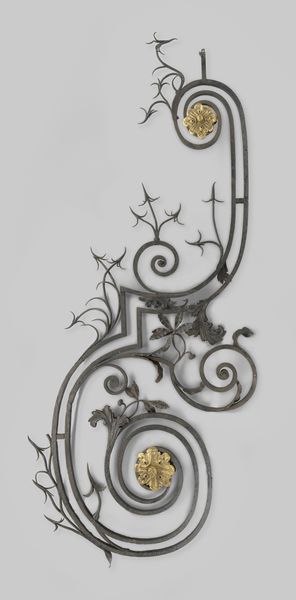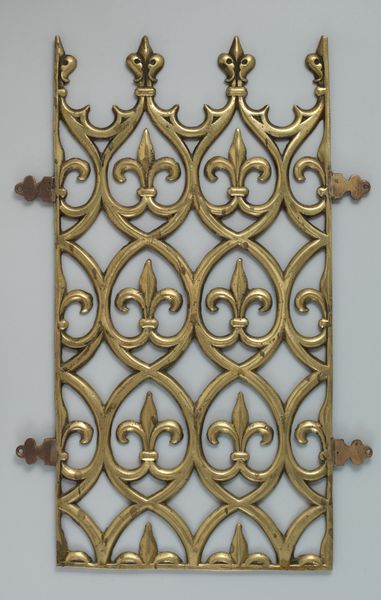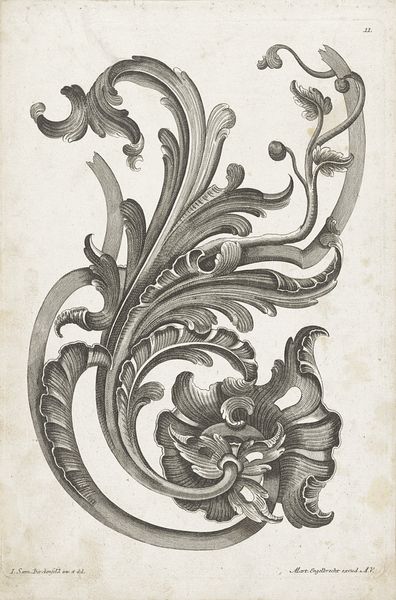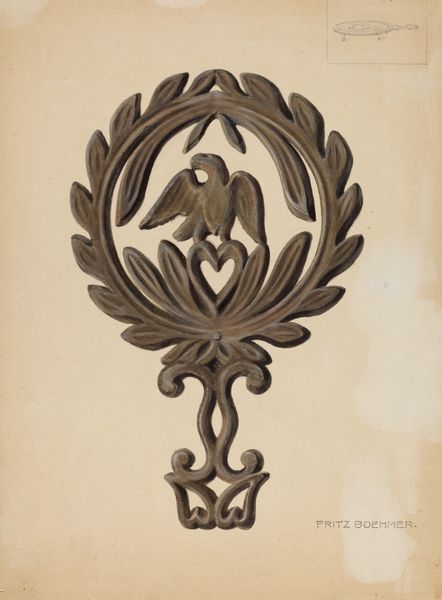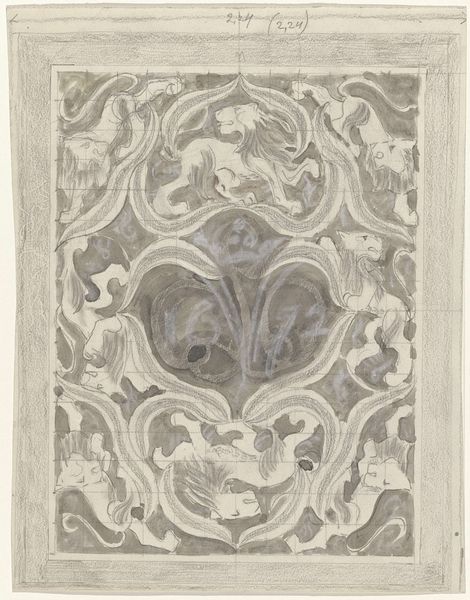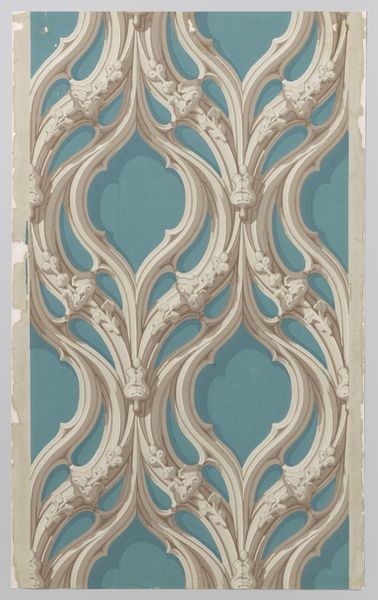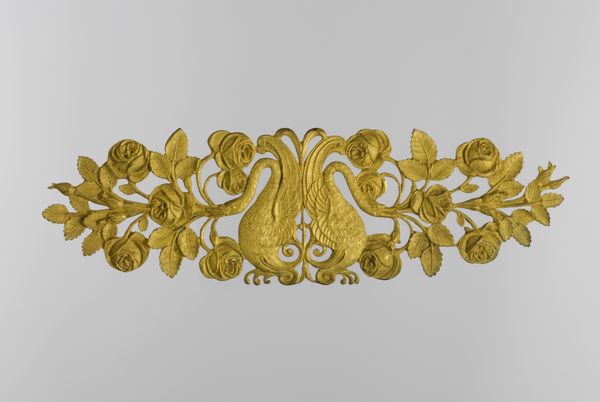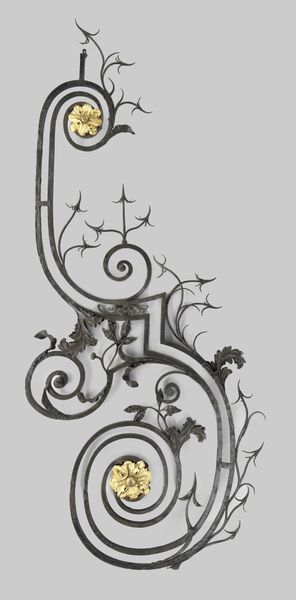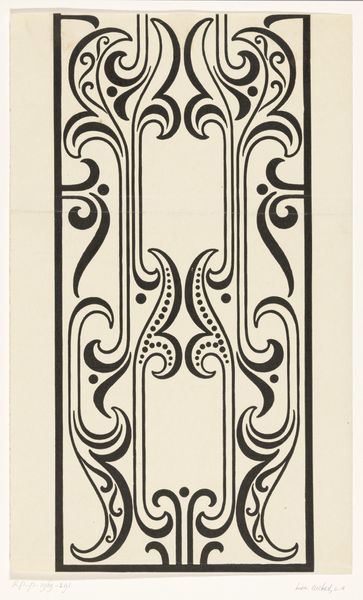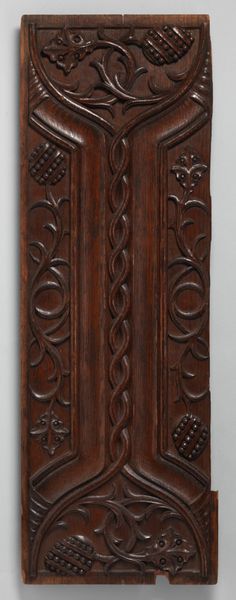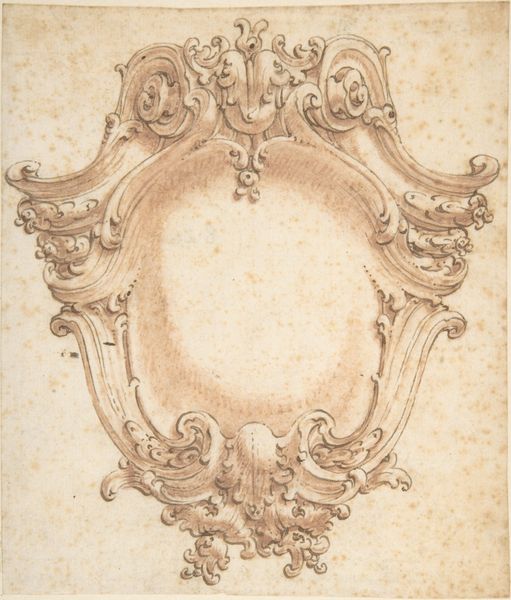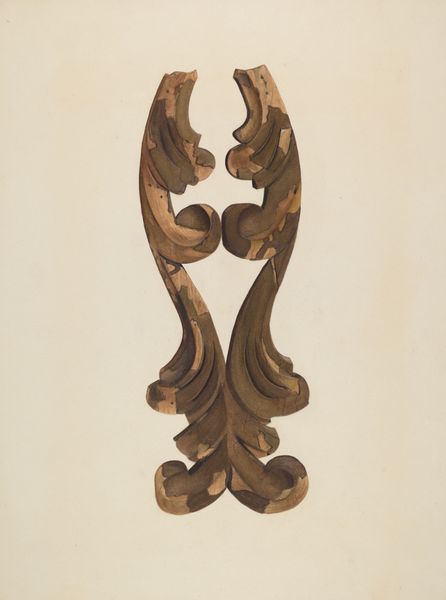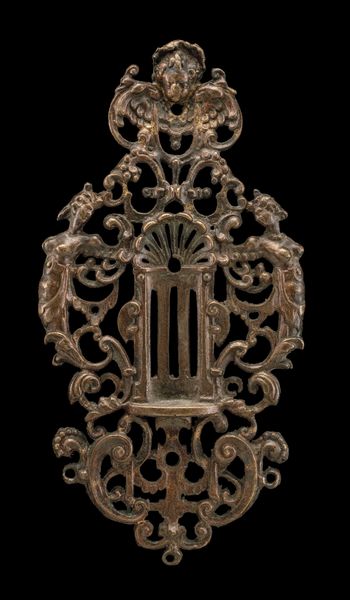
#
natural stone pattern
#
circular oval feature
#
naturalistic pattern
#
shading to add clarity
#
old engraving style
#
hand-embroidered
#
linocut print
#
layered pattern
#
coloring book page
#
doodle art
Dimensions: height 185.0 cm, width 145.0 cm
Copyright: Rijks Museum: Open Domain
This wrought iron sign was created by Jean Lamour, a master ironworker in France. The sign is a beautiful example of Rococo style, characterized by elaborate ornamentation, asymmetrical compositions, and themes drawn from nature. Think about the cultural context. In 18th-century France, signs like this were not merely functional; they were a form of public art. Guilds commissioned elaborate signs to advertise their trades and demonstrate their wealth and status. Lamour was a celebrated artist, who became famous as ironworker to Stanisław Leszczyński, the exiled King of Poland and father-in-law to Louis XV. This royal connection gave him considerable social standing, and it shows in the artistry and extravagance of his work. To better understand the significance of an artwork like this, scholars might consult guild records, period accounts of urban life, and collections of designs and pattern books that circulated among artisans. By considering these sources, we can better understand the social and cultural forces that shaped the production and reception of this sign.
Comments
No comments
Be the first to comment and join the conversation on the ultimate creative platform.
